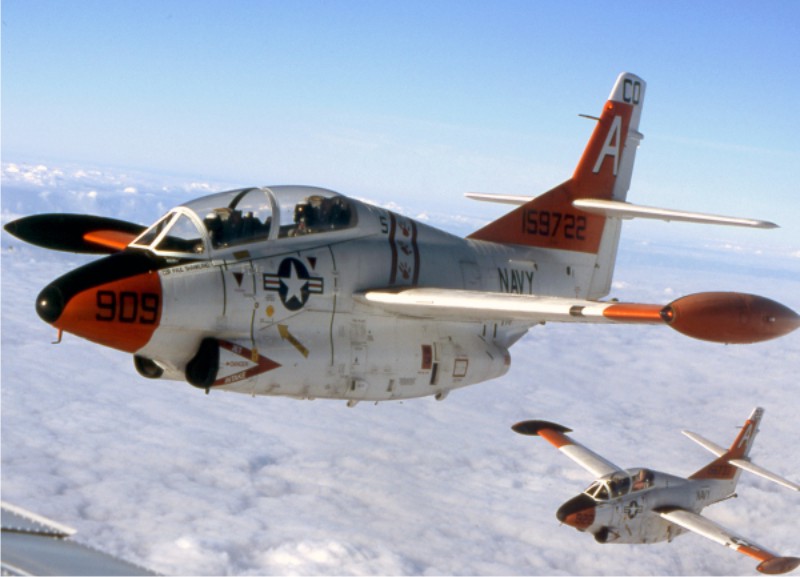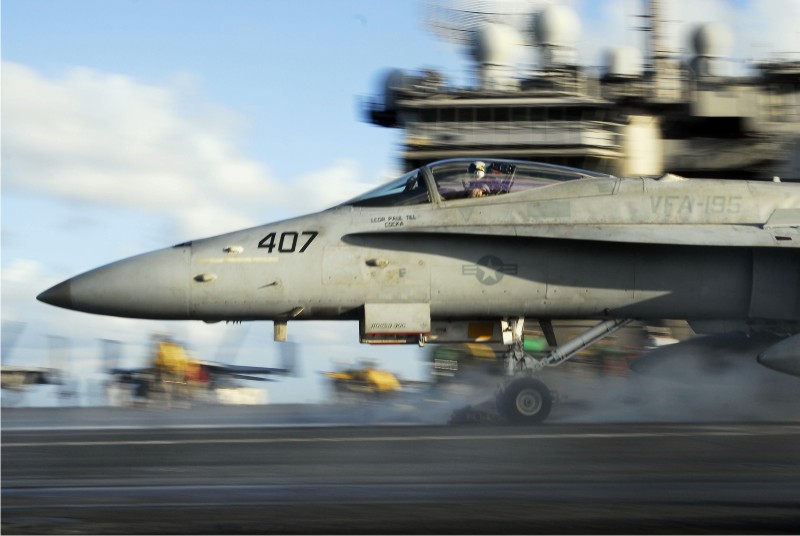
Ahoy mates and welcome to MSWís Scuttlebutt! Letís see what going on today.

Gatorís Masks and More Has Reopened
Kenny Loup has announce that he is once again taking and filling orders. Kenny wants to thank you for all you support in these trying times.

This Day in U.S. Naval History
1782 - As a token of gratitude for French aid during the American Revolution, the United States gives America (first ship-of-the-line built by U.S.) to France to replace a French ship lost in Boston.
1783 - Signing of the Treaty of Paris ends the American Revolution.
1885 - First classes at U.S. Naval War College begin.
1925 - Crash of rigid airship Shenandoah near Byesville, Ohio.
1943 - American landings on Lae and Salamaua.
1944 - First combat employment of a missile guided by radio and television takes place when Navy drone, Liberator, controlled by Ensign James M. Simpson, flew to attack German submarine pens on Helgoland Island.
1945 - Japanese surrender Wake Island in ceremony aboard USS Levy (DE 162).
Fall Activities Planned for the 67th anniversary of the loss of HMAS Sydney (II)
The Royal Australian Navy has announced the memorial events planned for this fall to honor the 67th anniversary of the loss of the HMAS Sydney II during World War II.
At-sea service over the site of HMAS Sydney (II) on 19 November 2008.
The City of Geraldton-Greenough will host their annual sunset memorial service at the Dome of Souls in Geraldton, Western Australia on 19 November 2008. Navy will provide assistance with the planning and execution of this service.
The Australian War Memorial, in conjunction with Navy, will organize a memorial service to be held on 19 November 2008 at the Australian War Memorial in Canberra, commencing at 11.00am.
In addition to these services, the HMAS Sydney & VLSVA of Victoria have organized two remembrance services in Victoria. The first is on Sunday 16 November at HMAS Cerberus in Westernport. The second is on 19 November at the Melbourne Shrine of Remembrance. Navy has some involvement in both services
HMAS Sydney was a light cruiser of the Royal Australian Navy (RAN) between 1934 and 1941. Sydney had great success in the first years of World War II, but controversy and mystery surrounded the loss of the battle-hardened ship and her crew in November 1941. Her sinking with all hands represents the greatest ever loss of life in an Australian warship; Sydney was also the largest Allied vessel of any country to be lost with all hands during the war.
She was classified by the RAN as a Modified Leander class cruiser, although these ships are sometimes known as the "Perth class" or the "Amphion class". As Sydney was originally intended for the Royal Navy, she was known as HMS Phaeton for part of her construction. The ship was bought by the Australian government and renamed before she was launched.
After years of searching, the wreckage of the German vessel that sank HMAS Sydney, the auxiliary cruiser Kormoran, was found on 12 March 2008. On 17 March 2008 the Australian Prime Minister Kevin Rudd announced that the wreck of HMAS Sydney had also been discovered, on 16 March 2008. Sydney was found 150 kilometers (81 nmi) from Shark Bay, Western Australia and 22.6 kilometers (12.2 nmi) from the Kormoran.
Hi-tech Weapons Handling System for New Aircraft Carriers
The Royal Navy is to get a hi-tech system to automate and track the movement of large quantities of munitions on board its two new aircraft carriers, thanks to a multi-million pound investment by the Ministry of Defence, it was announced today, Monday 1 September 2008.
The system, which will help crews manage the largest ships in the Royal Navy, is part of a £51m package of important equipment contracts for the future aircraft carriers that will be named HMS Queen Elizabeth and HMS Prince of Wales.
Contracts have been placed for:
-- The manufacture and installation of the Highly Mechanised Weapons Handling System for the two ships, valued at £34million;
-- Supply of uptakes and downtakes systems for both ships, valued at £8million;
-- Development and supply of Air Traffic Control software, valued at £5million;
-- Wholeship Pump Integration, including supply of pumps and associated systems engineering, valued at over £3million;
-- Emergency Diesel Generators, valued at over £1million.
Minister for Defence Equipment and Support Baroness Taylor said:
"An equipment programme of this scale has clear benefits not only to the Royal Navy and UK shipyards but to industry throughout the country. It truly is a national project. Defence Equipment and Support continues to work closely with industry to deliver the capabilities our Armed Forces need for now and the future."
MOD Defence Equipment and Support Director General Ships, Rear Admiral Bob Love, added:
"These contracts are the culmination of comprehensive design, engineering and commercial preparations completed earlier in the project.
"The Highly Mechanised Weapons Handling System is at the cutting edge of British engineering and will enable a crew of similar size to the current Invincible-Class carriers to operate a vessel that is considerably larger. Its development and demonstration is an achievement of which we can be proud."
BACKGROUND NOTES:
1. The contract to supply the Highly Mechanised Weapons Handling System (HMWHS) will be managed by Babcock International Group. Babcock has been engaged with Thales UK in the design development of the HMWHS. Babcock is the design authority for the technical solution being implemented; Thales is the systems integrator and Delegated Design Authority, ensuring that the HMWHS fits within the overall ship design and meets stipulated requirements.
2. The HMWHS provides mechanical handling facilities for moving palletised munitions around the magazine and weapon preparation areas and a series of weapons lifts to connect the magazines, hangar, weapons preparation area and flight deck. A control system provides overall systems integration, ensuring that the system can track the location of pallets.
3. A contract to supply the uptakes and downtakes systems for both Carriers has been awarded to Darchem Engineering Limited in Stockton-on-Tees. These systems will supply air to and remove exhaust gases from the ships' main gas turbine engines and other main and auxiliary diesel engines.
4. A contract to develop and supply Air Traffic Control (ATC) system software for use on the ships has been awarded to Cobham Plc based in Wimborne in Dorset. The contract was placed through ACA participant, BAE Systems Integrated Systems Technology Ltd. The ATC system will enable the Air Traffic Controllers to provide safe and efficient control of aircraft on the new carriers using a system that is already used by the Royal Air Force and many other civilian and military installations around the world.
5. A contract for Wholeship Pump Integration has been awarded to DESMI Ltd based in Staffordshire. As the 'Wholeship Pump integrator', DESMI Ltd will procure the pumps for all the ship's major services/requirements including those manufactured by DESMI and those manufactured by other pump suppliers.
6. A contract for emergency Diesel Generators has been awarded to Wartsila Lips Defence, an Italian Company based in Trieste. These will provide a dedicated reversionary power supply to retain a firefighting capability, even in the unlikely event of a total loss of electrical power.
7. A ceremony to mark the signing of the manufacture contracts for the two aircraft carriers HMS Queen Elizabeth and HMS Prince of Wales was held onboard the existing carrier HMS Ark Royal on 3 July 08.
Fifth Deployment of Landing Ship Tank to the Gulf to Support Reconstruction of Iraq
Singapore has made its latest contribution to the multi-national effort in support of the reconstruction of Iraq with the deployment of a Republic of Singapore Navy Landing Ship Tank (LST) RSS Resolution to the Gulf.
Led by Lieutenant-Colonel Tan Bian, RSS Resolution will undertake tasks such as protecting the waters around key oil terminals, conducting patrols and boarding operations, as well as providing logistics support for coalition vessels and helicopters during the three-month deployment.
Chief of Navy Rear-Admiral Chew Men Leong officiated at the send-off ceremony for the LST and its crew of about 175 personnel this morning at Changi Naval Base.
Since 2003, the SAF has completed four deployments of LSTs, five deployments of KC-135 tanker aircraft, and one deployment of a C-130 transport aircraft to the Gulf in support of the multi-national reconstruction efforts in Iraq.

T-2 Buckeye Sunset Ceremony Marks End of 50-Year Era
The historic 50-year training mission of the T-2 Buckeye came to a close with a sundown ceremony and fly-by at the Mustin Beach Officers' Club aboard Naval Air Station (NAS) Pensacola Aug. 22.

A crowd of more than 250 active-duty and former aviators, air and ground crew and civilians gathered for a celebration of the Buckeye's service life and retirement, which included a video history presentation. NAS Pensacola Training Air Wing Six's VT-86 was the last training squadron in the Navy to use the aircraft.
The Buckeye, which has trained thousands of naval aviators in its 50-year history, has flown more than 3.4 million flight hours, according to the Naval Safety Center and was the Navy's longest-serving jet trainer.
"We're saying goodbye to the aircraft for good," said VT-86 Commanding Officer Lt. Col. Bradley Close. "A lot of naval aviators cut their teeth on this aircraft, and for 50 years its given good service. The T-2 Buckeye will not be used in naval aviation training anymore."
Most of the remaining Buckeyes will join other retired military aircraft in "the boneyard," a long-term preservation facility at Davis-Monthan Air Force Base in Arizona, Close said.
"I had my last flight four or five days ago in the mighty Buckeye," Capt. Peter Hunt, commanding officer of Training Wing 6, said. "It's a great airplane, but we understand that you can't keep stuff forever, and the new T-45C Goshawk is fantastic. It's going to bring our training a good 20 years into the future overnight."
Retired Navy Capt. Dean Fournier, president of the Pensacola Council Navy League, was one of many at the sundown who had fond memories of the Buckeye.
"I started off as a student in the T-2A," said Fournier. "I came back flying it again as an instructor and ended up with 600 to 700 hours in the aircraft. It's built well, and the people who put it together have a lot to be proud of."
Training Wing 6 trains and graduates approximately 450 Navy, Marine Corps, Air Force and international students annually. The wing's primary, intermediate and advanced training courses prepare weapon systems officers (WSOs), naval flight officers (NFOs) and electronic countermeasure officers (ECMOs) for service around the world.
Photo of the Day

An F/A-18C Hornet assigned to Strike Fighter Squadron (VFA) 195 launches from the aircraft carrier USS Kitty Hawk (CV 63) during Rim of the Pacific (RIMPAC) 2008. The exercise included units from the U.S., Australia, Chile, Japan, the Netherlands, Peru, South Korea, Singapore and the United Kingdom.
Gator











